007 Casino Royale Full Movie gratis slot gallina Online Slot Senza Scaricare
5 Dicembre 2021Spike https://book-of-ra-play.com/it/book-of-ra-deluxe-10/ Slot
13 Dicembre 2021
Direct integration—ERP systems have connectivity (communications to plant floor equipment) as part of their product offering. This requires that the vendors offer specific support for the plant floor equipment their customers operate. ERP systems usually fail to achieve the objectives that influenced their installation because of a company’s reluctance to abandon old working processes. Some companies may also be reluctant to let go of old software that worked well in the past. The key is to prevent ERP projects from being split into smaller projects, which can result in cost overruns.
- The future of ERP is shaped by emerging trends and technologies that promise to transform how organizations manage their business processes and make data-driven decisions.
- Those tasks could include updating information on your website, transferring data between departments, and more.
- One battle of finding and selecting and ERP for your business is making sure it works with your existing software.
- As early as the 1960s, businesses started using computers for their accounting and finance solutions [1].
- Now, MRP II integrated manufacturing and production components — billing, scheduling, contact information — into one software for the first time.
The two form a cycle of progress — each of them improves the quality of the other. With so many simple processes being automated, your employees will be freed up to spend time on the more complex tasks, allowing your business to run more efficiently and generate more revenue. But if all your departments are isolated from one another, it makes it difficult to distribute that information. Scalability is another important factor to consider when selecting an ERP solution. As your organization grows, your ERP system will need to be able to accommodate increased user counts, transaction volumes, and data storage requirements.
ERP technology is changing for a modern business world
By providing tools for planning and scheduling production activities, these modules can help organizations ensure that they make the most efficient use of their resources and minimize the risk of production delays or disruptions. Cloud ERP solutions are more flexible because they are divided into modules that can be integrated into larger applications. With the ability to automate workflows, analyze data, and incorporate AI and machine learning insights, cloud ERP systems have become critical as organizations compete in the digital economy. Cloud ERP solutions are also scalable, secure, adaptable, and quickly accessible — capabilities that are in high demand in an ever-changing business environment. ERP offers numerous benefits, most of which come from information sharing and standardization. Because ERP modules can share data more easily than disparate systems, they can make cross-departmental business processes easier to manage.
Low-Code/No-Code Application Development – Putting Users in Control – DevOps.com
Low-Code/No-Code Application Development – Putting Users in Control.
Posted: Tue, 17 Oct 2023 07:00:00 GMT [source]
Customization options are another important factor to consider when selecting an ERP vendor. ERP vendors typically offer a range of customization options, including customizing the user interface, https://www.bookstime.com/ adding new features, and integrating with other systems. Understanding the customization options available and how they can be used to meet the organization’s specific requirements is essential.
Submit a new or better definition for ERP
With the advent of cloud-based ERP solutions, businesses can now benefit from increased scalability, flexibility, and lower upfront costs. A complete ERP suite also includes enterprise performance management, software that helps plan, budget, predict, and report on an organization’s financial results. See the industry-leading enterprise resource planning (ERP) cloud solution, serving as your integrated management of business processes and applications, to gain resilience and real-time agility, to position yourself for growth. Enterprise resource planning (ERP) is software, tools, and technology used to manage daily business operations and automate processes, such as accounting, supply chain, manufacturing, managing projects, and more. ERP applications can help a corporation become more self-aware by linking information about production, finance, distribution, and human resources together. Because it connects different technologies used by each part of a business, an ERP application can eliminate costly duplicates and incompatible technology.
ERP software also provides total visibility, allowing management to access real-time data for decision-making. Then, the hosting company loads the applications onto the server the client is renting, and both parties begin working to integrate the client’s processes and data into the platform. Reporting and analytics for legacy systems typically require involvement from a third-party vendor to generate operational business intelligence. Using cloud applications from your legacy ERP vendor often produces the same or better intelligence without needing an additional vendor relationship. Next-generation technologies, like artificial intelligence (AI), help cloud-based systems rapidly improve their capabilities with no need for periodic updates, unlike your legacy system.
Perform a Total Cost of Ownership (TCO) Analysis
Another important function of procurement and sourcing modules is inventory control, which involves overseeing and regulating a business’s inventory amount. This includes monitoring inventory levels, ordering new inventory, and avoiding overstocking. Procurement and sourcing modules can help organizations optimize their inventory management and reduce carrying costs by providing erp defined real-time visibility into inventory levels and automating the reordering process. The term “ERP” can be traced back to earlier manufacturing resource planning (MRP) and MRP II systems. ERP systems were initially designed to automate back-end operations without customer or public interaction. It primarily focused on managing internal operations rather than customer needs.
- User Interface (UI) – The way in which a software user is able to interact with a computer system.
- Though the earliest ERP systems were designed specifically for use by large enterprises, they can now be found in a growing number of smaller companies because of their usefulness.
- It primarily focused on managing internal operations rather than customer needs.
- The key is to prevent ERP projects from being split into smaller projects, which can result in cost overruns.
- ERP systems and software are an industry unto themselves, located at the heart of the technology space.
- CFI is the official provider of the Financial Modeling and Valuation Analyst (FMVA)® certification program, designed to transform anyone into a world-class financial analyst.
- ERP also integrates with front-office applications to build holistic views of customers, including customer relationship management (CRM) solutions.
ERP systems can help you deliver a completely unifying shopping experience for your customers both in-store and online. Your customers will receive a more personalized and seamless shopping experience while you enjoy more sales and revenue. ERPs can have a significant impact on your company’s operations, processes, workflows, and strategies. One battle of finding and selecting and ERP for your business is making sure it works with your existing software. The sections below cover how ERPs integrate and deploy with other tools in your arsenal. The engineer Ford Whitman Harris developed the economic order quantity (EOQ) model, which was a paper-based manufacturing system for scheduling and production.
What’s the difference between ERP and financials?
Engineer-to-Order (ETO) – A production approach where items are engineered and built to specifications after the order has been received and perhaps a deposit paid. Configure-to-Order (CTO) – A manufacturing process where the products have many options. Assemble-to-Order (ATO) – A business strategy that allows rapid production of customized product by combining a limited number of subassemblies into a large number of possible finished items. After ERP system, databases of different departments are managed by one system called ERP system. In this scenario, employee of one department have information regarding the other departments.
By carefully evaluating these factors, organizations can decide on the best ERP vendor to meet their needs and requirements. By regularly monitoring the success of the implementation, organizations can identify and address any issues or challenges that may arise and ensure that the ERP system continues to deliver value. As these technologies continue to evolve and mature, they will further enhance the capabilities of ERP systems, helping businesses become even more agile, efficient, and responsive to changing market conditions.
ERP Weaknesses
Although the term “financials” is often used when describing ERP software, financials and ERP are not the same thing. Work in Progress – Items that have entered the production cycle but are not yet finished. User Interface (UI) – The way in which a software user is able to interact with a computer system. Upgrade – Replacing the current version of the software with a newer, improved version. Traveler – A document that travels with the items being produced listing the routing steps and materials needed.
